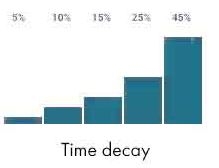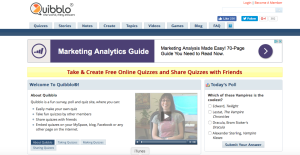All people decisions at Google are based on data and analytics. The goal is to bring the same level of rigor to people decisions that we do to engineering decisions. – Laszlo Bock
This quote from Google shows that they understand the value of their most important asset – their people.
Do you think it’s a coincidence that Google has won Best Places To Work every year in a row for the last three years?
It’s because they have the most advanced HR department of any company out there, and are systematically making sure their people are the happiest and most productive they can be.
Every HR department needs to understand what makes Google so good.
The real issue though, is that it’s much bigger than HR. It’s senior management, legal, and outdated business practices that are holding everyone back.
I’ve written about data-driven HR before, but companies still aren’t getting it. According to research from Deloitte, “only 4% of companies have achieved the capability to perform “predictive analytics” about their workforce.” (more on this later).
A very real issue and a potential reason for why the Deloitte numbers are so low is that HR managers aren’t data scientists. HR managers haven’t been trained on crunching and analyzing large data sets; they were trained on how to build that human connection. Most HR managers got into HR because they like dealing with people, not because they like dealing with spreadsheets.
Here are just a few of the ways that people analytics has transformed the way Google operates.
1. Project Oxygen
I’ve written about this a few times, but that’s because it’s so incredible. Their people team analyzed tons of internal data like employee surveys and performance reviews to find what makes a great manager.
It identified eight characteristics of great leaders, and they now use this data to train other managers to make sure they’re all performing their best.
It’s worth noting that frequent one-on-one coaching and frequent personalized feedback ranked as the number one thing to being a successful leader.
2. The PiLab
We’ve touched on this briefly in our post about the psychology of colors in office environments, but the PiLab is a group within their people team that runs experiments to determine how to make employees most effective. So things like scientifically designing the wait times in their lunch lines, to adjusting the size of the plates (to reduce calories).
3. Hiring Algorithms
Google has figured out a few key things when it comes to hiring and firing using their algorithms. For example, they say that there is very little value after four interviews, which shortened their time to hire.
There is also a diversity algorithm, to make sure they have enough diversity within their teams. They also do predictive analysis to figure out when people are likely to quit, or what keeps a good employee on board.
The Problems With People Analytics
First, let’s look at some data from Deloitte:
- only 4% of companies have achieved the capability to perform “predictive analytics” about their workforce
- only 14% have done any significant “statistical analysis” of employee data at all
- the remaining 84% are dealing with data management and reporting challenges
Let me start with an interesting story.
In 2008, Google claimed that they could predict outbreaks of the flu, weeks before the CDC by using their search data. Naturally, many people on the internet were impressed, and praised Google for their work.
Researchers at Harvard later discovered that Google was overestimating the cases by up to twice as many.
How could this happen? It was because of their auto-complete feature. If you type in “do I have f” into Google, it would suggest “do I have flu” as the first response, leading people to search for that.
Google’s focus on correlation instead of causation was the problem.
I mention this story to show that data is only good if you know how to use it. Many HR managers are stuck with clunky systems that don’t report easily, and they’re not even sure what they should be reporting on.
According to Deloitte’s 2014 Human Capital Trends survey, 86% of companies reported no analytics capabilities in HR and 67% rated themselves ‘weak’ at using HR data to predict workforce performance.
Things like cost-per-hire or time-to-hire are cool, but I wish HR would go deeper than that.
What about cost per effective hire? What about retention? What about tracking the entire employee lifecycle to see where things can be improved?
Here’s the secret. HR managers shouldn’t measure HR metrics. They should measure business metrics. Figure out what makes an employee a top performer and what makes them stay at the company.
Examples Of Companies Using People Analytics
There are a few other great examples and case studies of companies using people analytics besides Google. You should use employee surveys to figure out what makes employees happy and healthy.
1. The Bon-Ton Stores
Bon-Ton, which is a furniture chain of more than 280 stores, used data to identify attributes that made cosmetics sales reps successful. Now when they recruit, they screen potential reps using tests to measure these traits. Those who score in the top half tend to sell 10 percent more product than the others and tend to like their work more. Since 2008, they’ve seen an increase of $ 1,400 in sales per representative and 25 percent lower turnover among them.
2. PNC Financial Services
The executives at PNC suspected that their external hires were worse than internal hires. Using data, their HR team analyzed sales data of external vs. internal hires. What they found was that, in fact, internal hires were more productive than external hires, saving the bank millions of dollars.
Do You Use People Analytics?
(289)
Report Post





